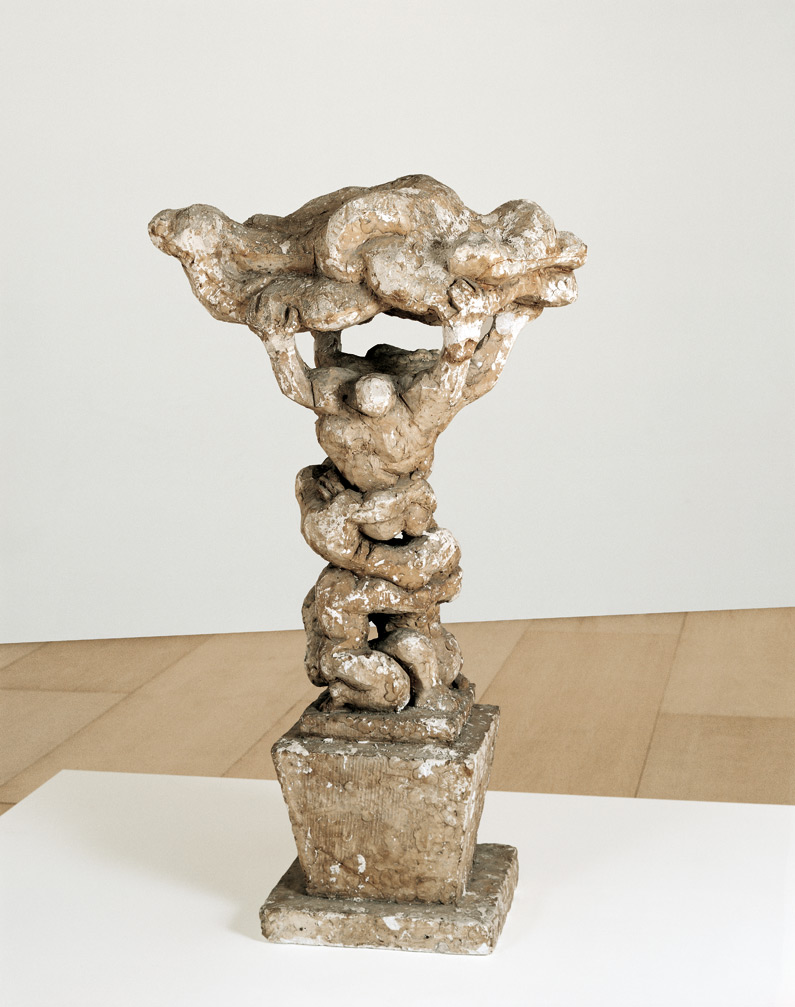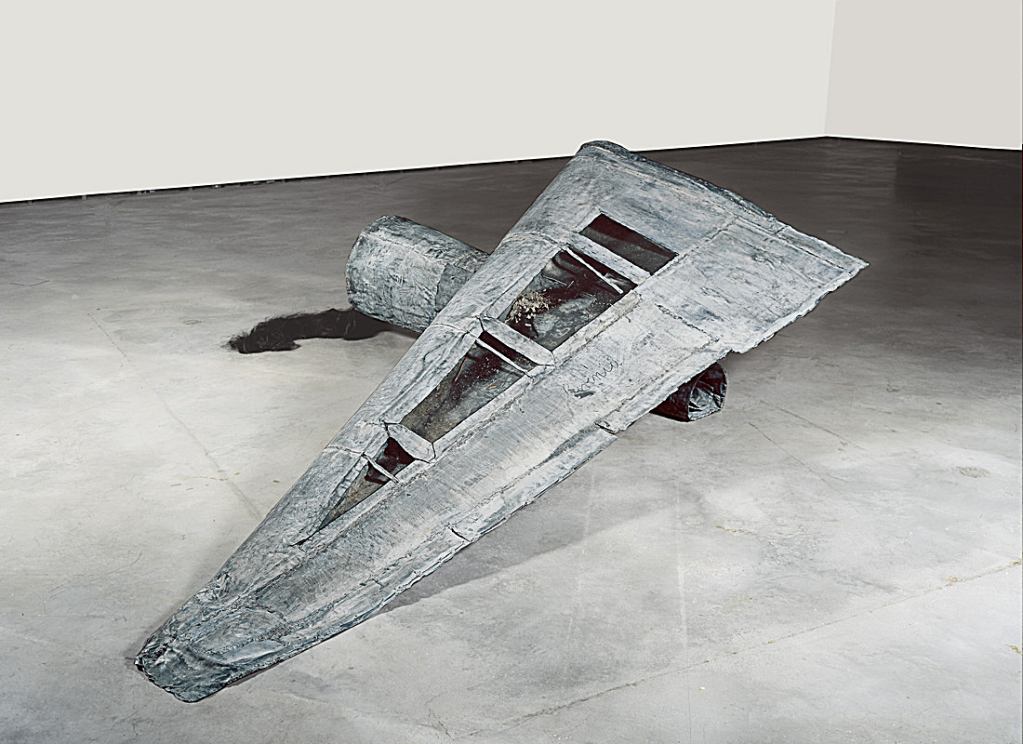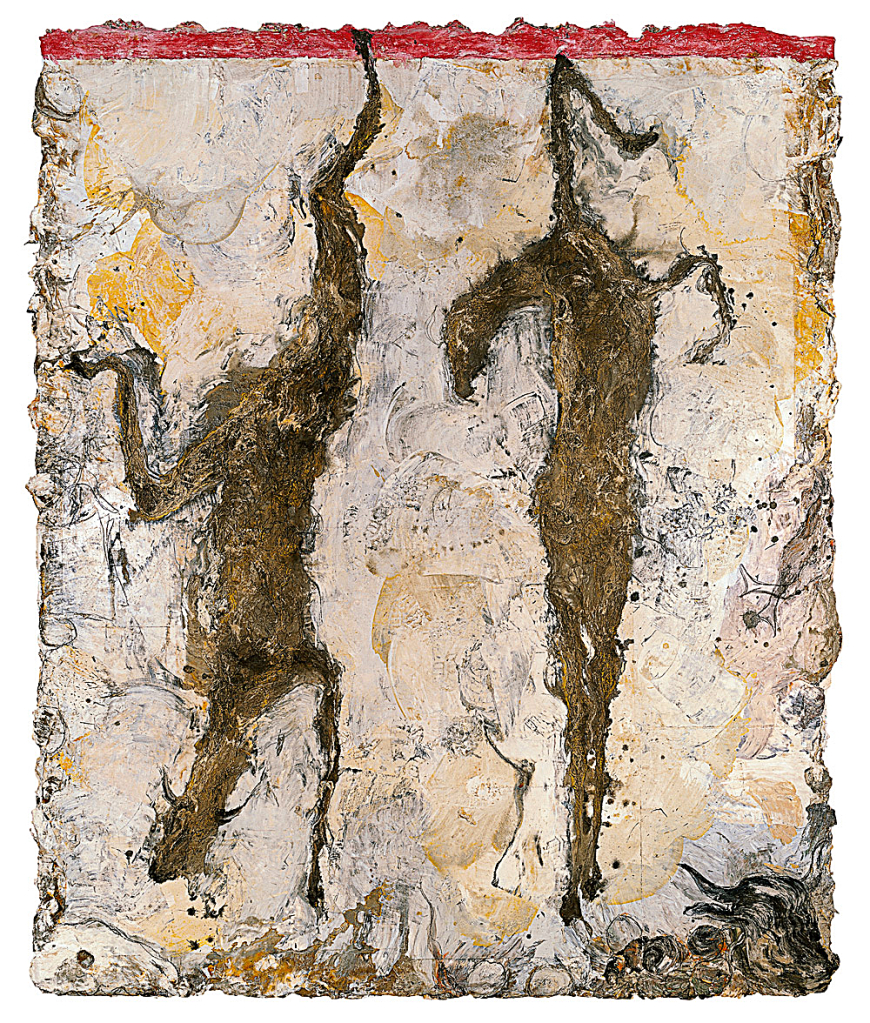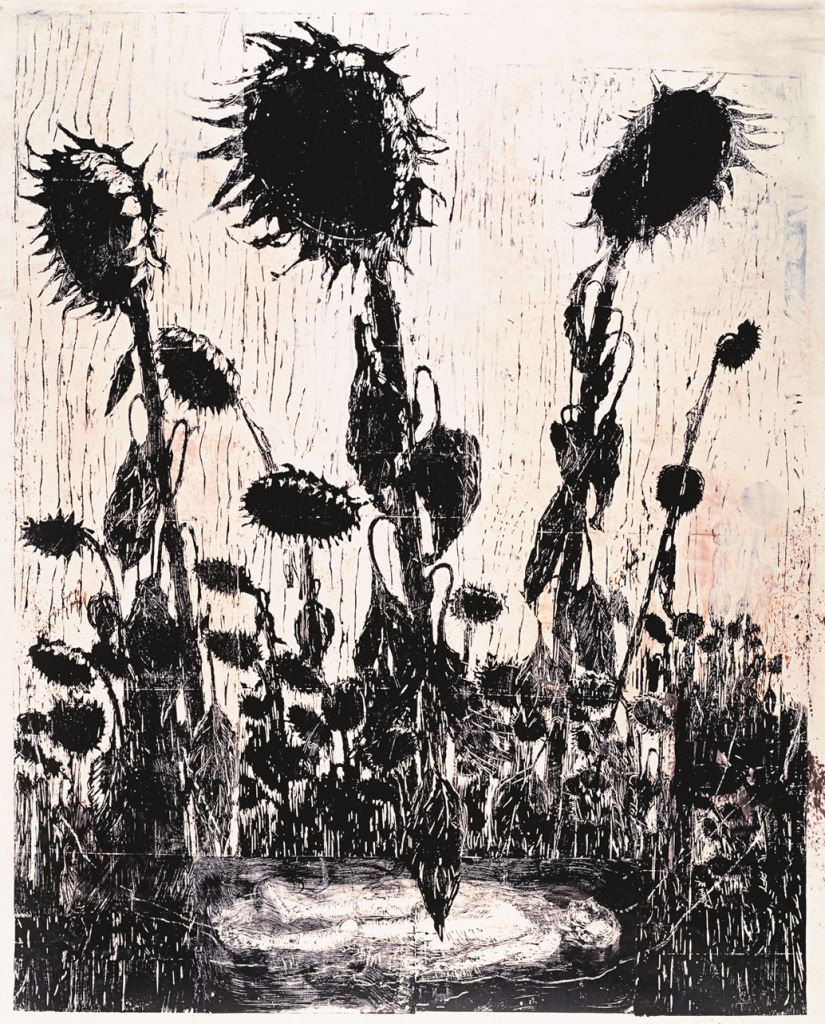Variation on the Theme of Last Embrace (Salvataggio) III
1970-72Blue pen on paper32.5 x 67.5 x 4 cm
Born Chaim Jacob Lipchitz in Lithuania (then part of Tsarist Russia) in 1891, Jacques Lipchitz lived and worked in Paris from 1909 until 1940, when he fled the Nazi invasion and ultimately immigrated to the United States, where he spent the last decades of his life. Lipchitz is principally known for his Cubist sculptures of the 1910s, in which he created sculptural equivalents to the pictorial innovations of Pablo Picasso, Georges Braque, and Juan Gris, deploying traditional sculptural means of carving in wood and stone and casting in bronze. He is also known for the "transparents" he began making in the mid-1920s, in which the solid blocks and bas-reliefs of his Cubist sculptures gave way to more open forms.
The two drawings by Lipchitz in the Guggenheim Museum Bilbao Collection are preparatory studies for one of his last plaster sculptures, Variation on the Theme of the Last Embrace (Salvataggio) III (1970–72). As the title suggests, both the sculpture and the two preliminary drawings represent two embracing figures, a subject touched upon time and again by Lipchitz from his very first decade of work, and to which he referred in the sculpture Working Model for Government of the People (1967), also part of the Guggenheim Museum Bilbao Collection. In Lipchitz’s oeuvre, this subject expresses a tension between extremes, as the loving embrace can also be read as a clash between two fighting bodies, thus opening the way to opposing interpretations. Art historian Alan Wilkinson writes: "In Lipchitz’s treatment of such themes, the line between love and affection, violence and death is not always clear." [1]
Lipchitz saw drawing as a research tool for his sculptural work: "All my drawings are related to my sculpture. I never make drawings as independent works of art." [2] He used it to study specific aspects of his designs, to develop their details, and to research the effects of light on their different forms. It was here that each new advance in his plastic vocabulary would appear for the first time. For example, the early drawings from his Cubist period, often made as life drawings, are refined exercises in synthesizing different perspectives of an object or combined views of two or more objects on the same plane. Nonetheless, they already point toward "a relaxation of form and a curvaceous, softer technique," [3] both characteristics of the work Lipchitz produced in his maturity, including the two drawings in the Guggenheim Museum Bilbao Collection. When these drawings are viewed together, the duplicated motif and energetic, repeated lines seem to bring movement to the figures portrayed, while accentuating the dynamic contours and internal structure of both compositions.
1. Alan G. Wilkinson, Jacques Lipchitz: A Life in Sculpture (Toronto: Art Gallery of Ontario, 1989), p. 164.
2. Jacques Lipchitz, My Life in Sculpture (New York: Viking Press; London: Thames and Hudson, 1972), p. 31; quoted in Catherine Pütz, "Proyectos para escultura: Lipchitz sobre papel", in Jacques Lipchitz: Dibujos y esculturas, exh. cat. (Bilbao: Bilbao Fine Arts Museum, 2003), p. 35.
3. Pütz, "Proyectos para escultura: Lipchitz sobre papel," p. 44.
Original title
Study for Variation on the Theme of Last Embrace (Salvataggio) III
Date
1970-72
Medium/Materials
Blue pen on paper
Dimensions
32.5 x 67.5 x 4 cm
Credit line
Guggenheim Bilbao Museoa Gift by D. Hanno D. Mott
At the Museum







